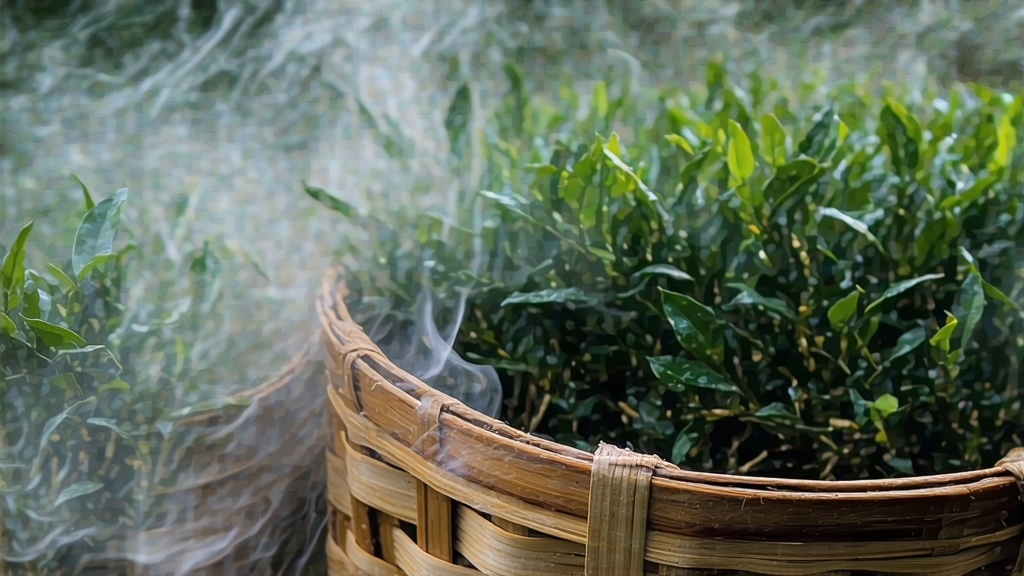
Longjing, literally “Dragon-Well,” is more than a tea; it is a liquid manuscript of Chinese history, landscape and craftsmanship. Grown on the hillsides that ring West Lake in Hangzhou, this celebrated green tea has been courted by emperors, praised by poets and smuggled in diplomatic pouches. Yet its greatest triumph is the way it distills an entire season into a single sip: the mist of April mornings, the quartz soil of Lion Peak, the charcoal warmth of a master fryer’s palm.
History and Legend
The first credible reference appears in Lu Yu’s eighth-century Classic of Tea, but Longjing’s mythic birth is pinned to a well near Longjing Village. During the Qing dynasty, the Kangxi Emperor tasted the local tea on his southern inspection tour and was so enchanted that he conferred imperial status upon the eighteen bushes still growing in front of the Hugong Temple. His grandson Qianlong went further, plucking the leaves himself and awarding them the designation “tribute tea.” From that moment forward, every spring caravan to Beijing included tiny tin boxes sealed with yellow silk, ensuring that the emperor drank Longjing while snow still clung to the Forbidden City’s roofs.
Terroir and Classification
Authentic West Lake Longjing occupies a microclimate shielded by mountains and fed by mineral-rich springs. Within this 16-square-kilometer core zone, five sub-appellations are recognized: Lion (Shi), Dragon (Long), Cloud (Yun), Tiger (Hu) and Plum (Mei). Lion Peak Longjing, grown on quartzite slopes above 300 meters, commands the highest prices; its leaves are shorter, more jade-colored and carry an unmistakable “bean” or chestnut note. Beyond the lake, similar cultivars are grown in Qiantang, Yuezhou and even Zhejiang’s outer counties, but connoisseurs insist that only the lake’s terroir can coax the elusive “orchid fragrance” from the leaf.
Cultivar Science
The original heirloom is the Longjing #43 clone, selected in 1972 for its early budding and high amino acid content. More recently, the Jiukeng and Wuniuzao strains have been adopted to extend the picking window, yet purists still prefer #43 for its balance of sweetness, umami and slight astringency. Farmers watch the lunar calendar: Qingming (early April) marks the cutoff for the prized “pre-ming” leaves, when each bud still carries the downy pubescence of winter dormancy. After Guyu (late April), growth accelerates, cellulose thickens and the cup loses its silkiness.
Plucking Ritual
At 5 a.m., when dew keeps the leaves supple, pickers fan out wearing bamboo hats and indigo tunics that camouflage against the tea rows. The standard is “one bud with one unfolding leaf,” a pluck that weighs 0.2 grams and must be snapped, not torn, to preserve the epidermis. A seasoned picker gathers only 500 grams of fresh leaf in a day; that will shrink to 100 grams after firing, enough for perhaps twenty cups. The baskets are lined with thin bamboo sheaths to prevent bruising, and every hour the harvest is carried to the village square where the fryers wait.
Pan-Firing: Hand vs. Machine
Longjing is the only famous Chinese green tea still shaped entirely by hand in its premium grades. Ten minutes after plucking, the leaves are tumble-fried on a wok whose temperature hovers between 80 °C and 100 °C. The master uses only his bare palm, calloused years ago into an asbestos-like pad. Ten distinct motions—grasp, shake, rub, press, buckle, fling, straighten, tuck, stroke and flick—coax the leaf into the flat, sword-like profile that resembles the Ming dynasty willow-leaf sword. The entire process lasts twenty-five minutes and must be completed before the leaf’s internal temperature drops below 40 °C; otherwise, enzymatic oxidation will yellow the liquor. Machines can mimic the geometry, but they cannot replicate the micro-burnishing that seals the leaf surface, locking in the bright chlorophyll note that connoisseurs call “qing.”
Grading Lexicon
After firing, tea is sorted by sight, touch and sound. Grade AAAA (often labeled “Imperial”) requires 95 % of leaves to measure between 1.5 and 2.0 cm, lie perfectly flat and emit a faint metallic ring when dropped onto porcelain.